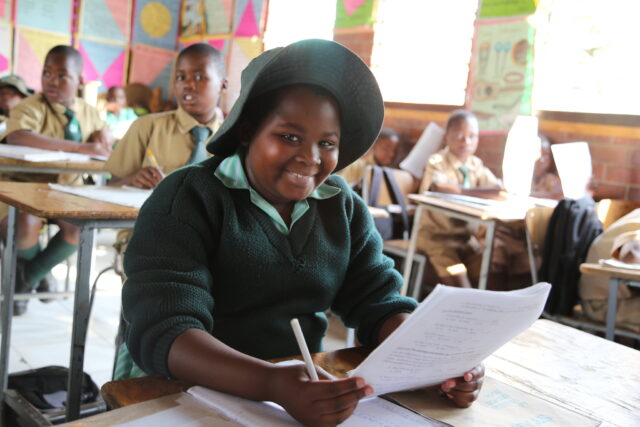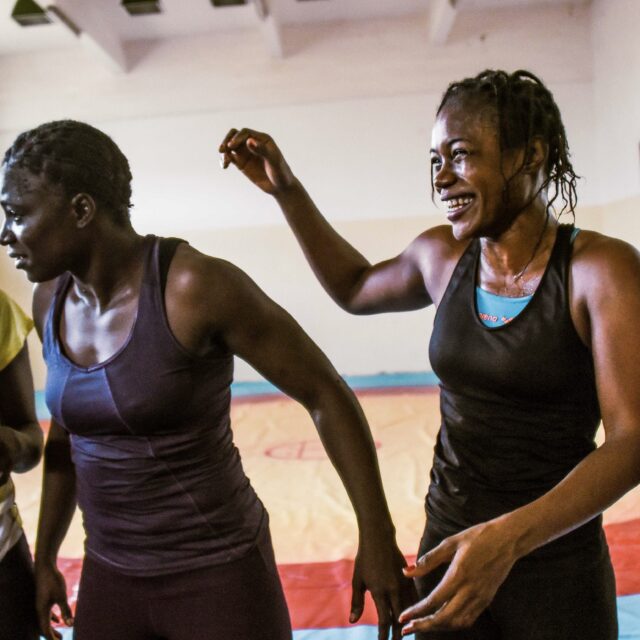Ashlegh Pfunye and Iyunoluwa Ademola-Popoola are Youth Leaders for Global Partnership for Education. They raise awareness of the barriers to education and aim to increase the ambition of leaders for financing education and development.
It is undeniable that COVID-19 has altered how we live and work. Lives continue to be lost, and hospitals and health workers have been overwhelmed with patients suffering from the virus. Though efforts such as social distancing, wearing of masks, and bans on large gatherings have been implemented to curb the spread of the pandemic, specific measures need to be taken to mitigate the impact of the pandemic on girls.
Girls are more vulnerable
Girls’ education has been specifically challenged by the pandemic, especially for girls from low-income households and girls in rural areas. Girls have faced threats, including increases in child marriage, teenage or early pregnancy, and gender-based violence. Many girls were married off in exchange for money as a result of the economic effects of the pandemic on families. The increase in child marriage resulted in an increase in teenage or early pregnancy. There was also an increase in rape cases which led to unwanted pregnancy and survivors are more likely to drop out of school.
We have seen the impact of these in our communities. For example, World Vision shared a story about Cecilia (a pseudonym), a 17-year-old girl from Tavengerwa village in Gokwe South in Zimbabwe. She had lived with her father and was attending school when the pandemic broke out. As a result of the economic pressure of COVID, she was married off to an elderly man who already had a wife and two children. The community facilitator from her village shared that due to school closures, many girls are more vulnerable to these situations. Cecilia’s friend and neighbour also got married within a few months of Cecilia.
The economic security of girls is deteriorating since they have a limited source of income. The burden of household responsibilities grows heavier and their freedoms may well be curtailed in line with gendered expectations about female behaviour and girls’ vulnerability to sexual violence. Sexual and reproductive rights are highly compromised in this lockdown as girls are unable to leave home to seek safety from their abusers.
UNESCO’s COVID-19 Global Education Coalition reported that teenage pregnancy across Sub-Saharan Africa could increase by as much as 65% as a result of school closures because of the COVID-19 pandemic. In my community, I have seen that girls who have children as teenagers have had to give up their education in order to take care of their children, while some are forcefully sent out of school. Many of these girls then try to learn a trade or become petty traders.
Increased dropout rates
The education emergency caused by COVID-19 could also roll back progress that has been made to achieve gender equality in education. It has been reported that there will be a sharp increase in the number of girls who would not be able to return to school after the pandemic. Prior to the pandemic, 15 million girls were out of school in East Asia and the Pacific. The Malala Fund found that due to COVID-19, more than 20 million girls (from pre-primary to upper secondary) are at risk of dropping out and may never return to school.
Building back better
Access to technology is essential for girls. The 21st-century economy needs individuals to be technology literate. Girls have largely been missing out, it is important to equip them with knowledge and skills to efficiently and effectively use technology to advance their interests and ambitions.
There are deeper structural challenges that the world needs to deal with such as child marriage and sexual and reproductive health rights of girls. After COVID-19, there might be a rise in child marriages due to the economic hardships that families have been exposed to during the lockdowns and the paradigm shift of working conditions. The world must invest in the education and security of girls as resources for the future of this world.
Rebecca Solnit in her book Hope in the Dark says that “To hope is to give yourself to the future, and that commitment to the future makes the present inhabitable.” This is what drives the future we want for girls. With all the challenges confronted, with all the hardships faced throughout decades our hope in girls is not lost and we believe that a new world is possible. It is true that the future is uncertain. Thus, hope calls for us to act, it forces us to take steps towards the imagined future.
This is a generational call to ensure that we set a legacy of creating a society that values all people equally regardless of gender, tribe, and race. The future of the girl child lies in the decisions and actions we take today.
Sign our petition and tell governments to invest in every child’s future.
*Image is of a girl at Glenview n*2 Primary School, Zimbabwe. Credit: GPE/ Carine Durand



